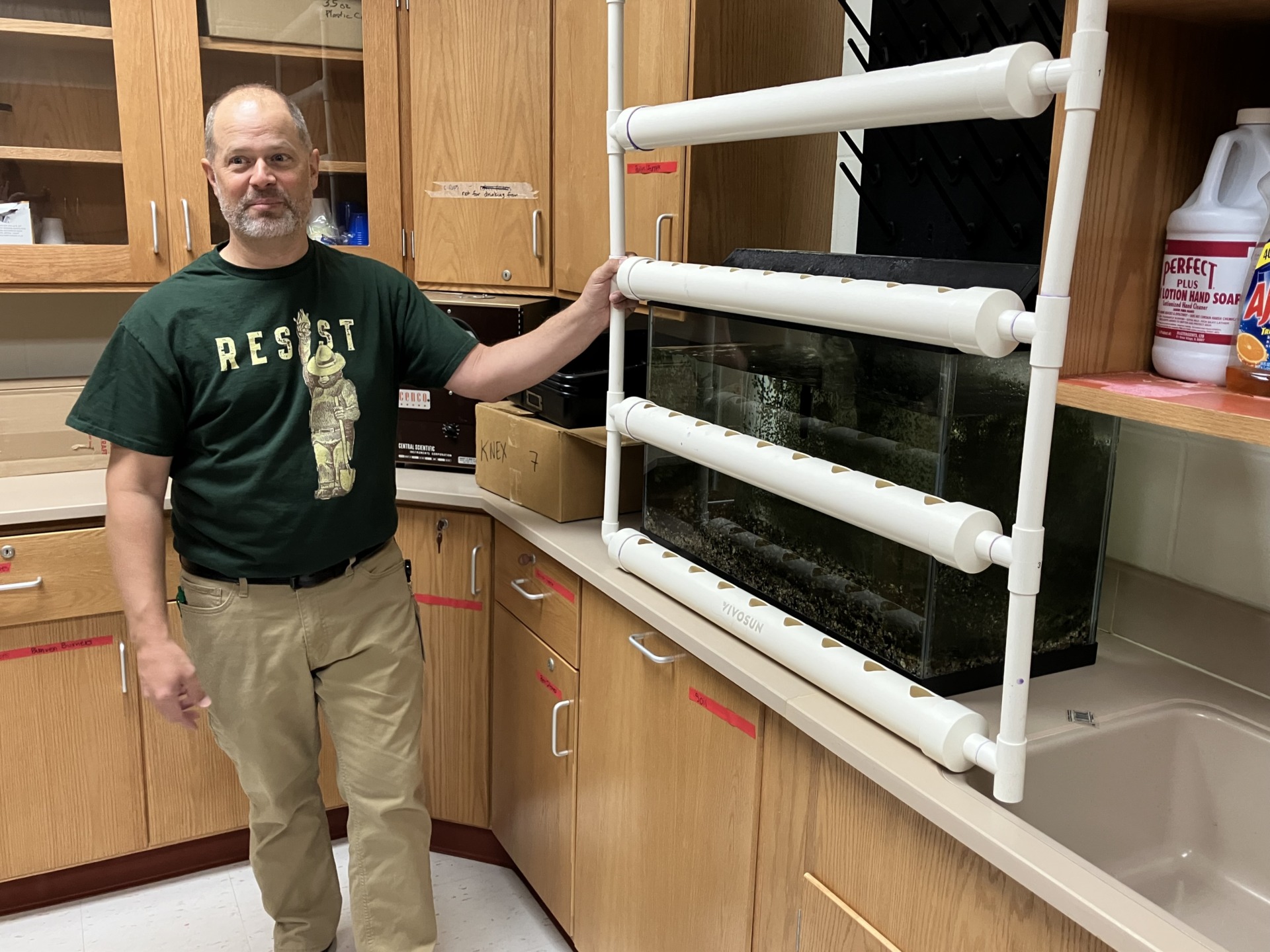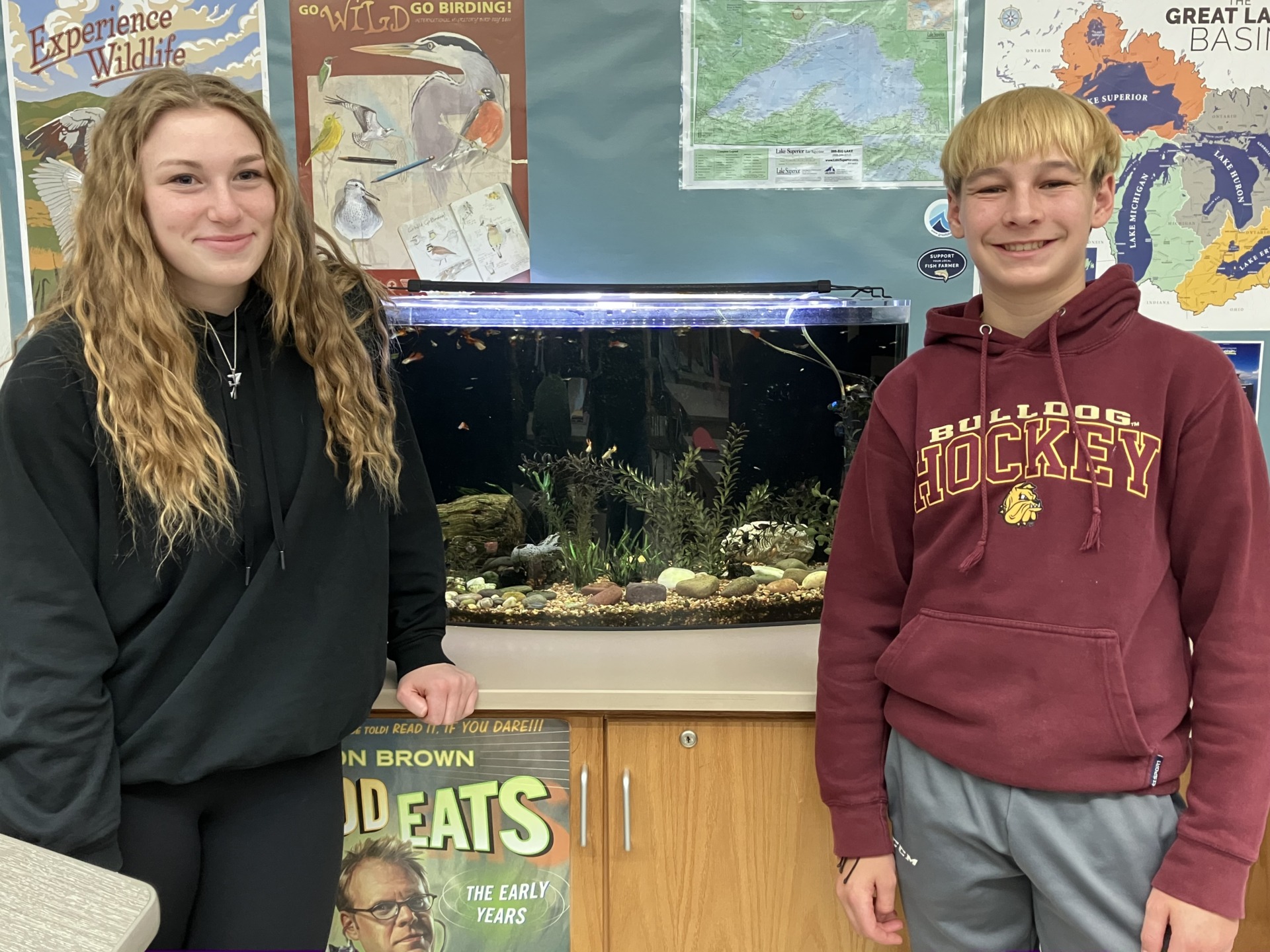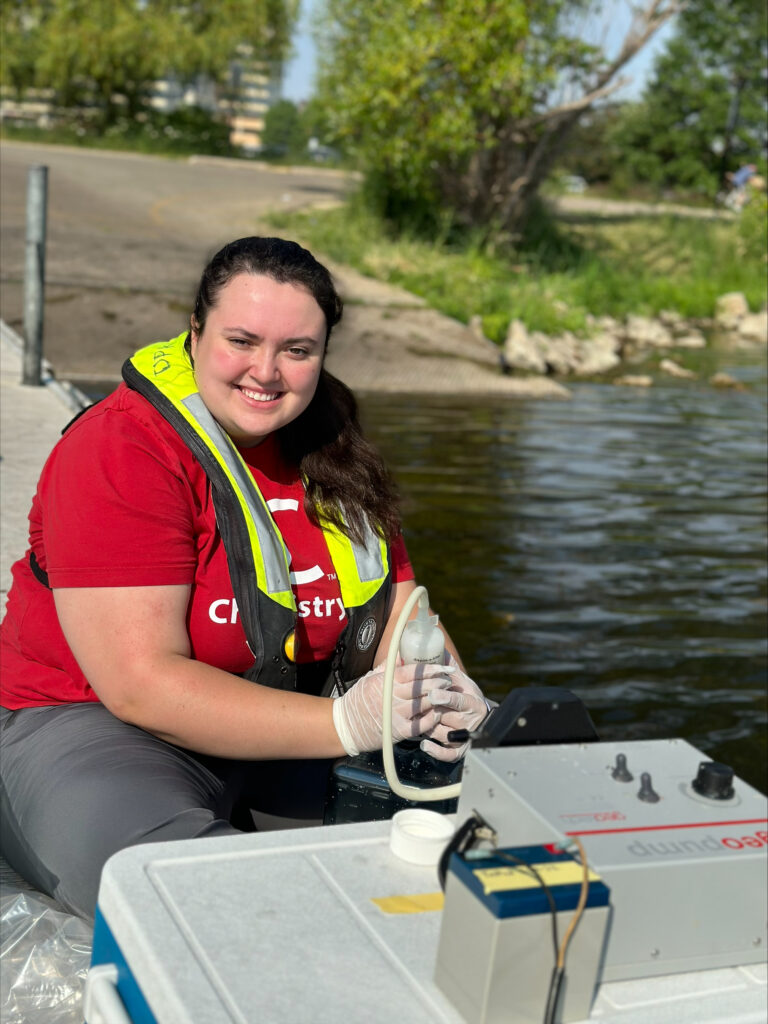Getting kids hooked on fish farming

Superior Middle School teacher Dan Widiker stands next to the PVC grow tubes that contain the plants in the aquaponic system. Photo: Wisconsin Sea Grant
Ask a kid what they want to be when they grow up, and chances are they’ll rattle off a list of the usual suspects: doctor, firefighter, artist, astronaut. Sharon Moen, Wisconsin Sea Grant’s food-fish outreach coordinator, hopes to add “fish farmer” to that list.
Moen and Wisconsin Sea Grant aquaculture outreach specialists Emma Hauser and Dong-Fang Deng are partnering on a project to build awareness of fish farming and boost training opportunities for young people. The project, funded by the Freshwater Collaborative of Wisconsin, is a step towards developing an aquaculture workforce in the state.
“When I speak with our farmers producing rainbow trout, Atlantic salmon, tilapia and other fish for food, one of the biggest hurdles they report is that there are not enough workers. They need help. Meanwhile, many students don’t know working on a fish farm is a real job they can have,” Moen said.
One way to build awareness is to get more fish in front of more kids. As part of the project, the Wisconsin Sea Grant team invited educators to apply for $500 grants to set up, reboot, or improve systems that allow students to grow fish as part of their school day.
Dan Widiker, an 8th grade science teacher at Superior Middle School in Superior, Wisconsin, received one the six grants distributed so far. This spring he set up a fish tank and mounted a PVC-pipe system to circulate water and grow buttercrunch lettuce. The sprouting seeds provide not only proof of concept but also serve as effective learning tools.
“With eighth graders, if they can’t see it and touch it, the abstract concepts don’t always land,” said Widiker. “[Now] they have something a little bit more concrete. And if they can interact with it and see value with it, then it’s a lot more meaningful.”
Widiker and his fellow science teachers recently revamped their curriculum to be more place-based — that is, to focus on the local environment rather than far-flung locales across the globe. He hopes the fish-and-plant aquaponic system will encourage students to think about the ways humans intersect with the environment, particularly when it comes to food, which is often shipped across the country and world.

Middle school students Ava and Liam with the guppy tank in Dan Widiker’s classroom. Photo: Wisconsin Sea Grant
That’s especially true when it comes to seafood. The National Oceanic and Atmospheric Administration estimates that 70% to 85% of seafood consumed in the United States is imported from abroad, and more than half of those imports are produced via aquaculture. What if, instead of transporting food thousands of miles across the globe, it could be raised locally?
For that vision to become a reality, the industry needs to cultivate a workforce. To that end, in addition to putting fish in schools, the project team is making it possible for undergraduate students to work in aquaculture facilities near Milwaukee, Madison, and Bayfield this summer. Already two students are working with Deng in her lab at the University of Wisconsin-Milwaukee School of Freshwater Sciences, and three are learning the nuances of raising yellow perch alongside a commercial fish farmer.
Back in Widiker’s 8th grade classroom, students Ava and Liam await the introduction of fish into the tank. Both are fans of their teacher’s dynamic approach to science.
“I personally think it’s going to be great because it’s hands-on and more like you can see it. You can see the effects,” Ava said. “It’s cooler to see, and it makes me pay attention more.”
Added Liam, “There’s always something we don’t know that we learn each day.”
Educators interested in setting up an aquaponic system in their classroom can email Sharon Moen at smoen@aqua.wisc.edu.
The post Getting kids hooked on fish farming first appeared on Wisconsin Sea Grant.News Releases | Wisconsin Sea Grant
News Releases | Wisconsin Sea Grant
https://www.seagrant.wisc.edu/news/getting-kids-hooked-on-fish-farming/









